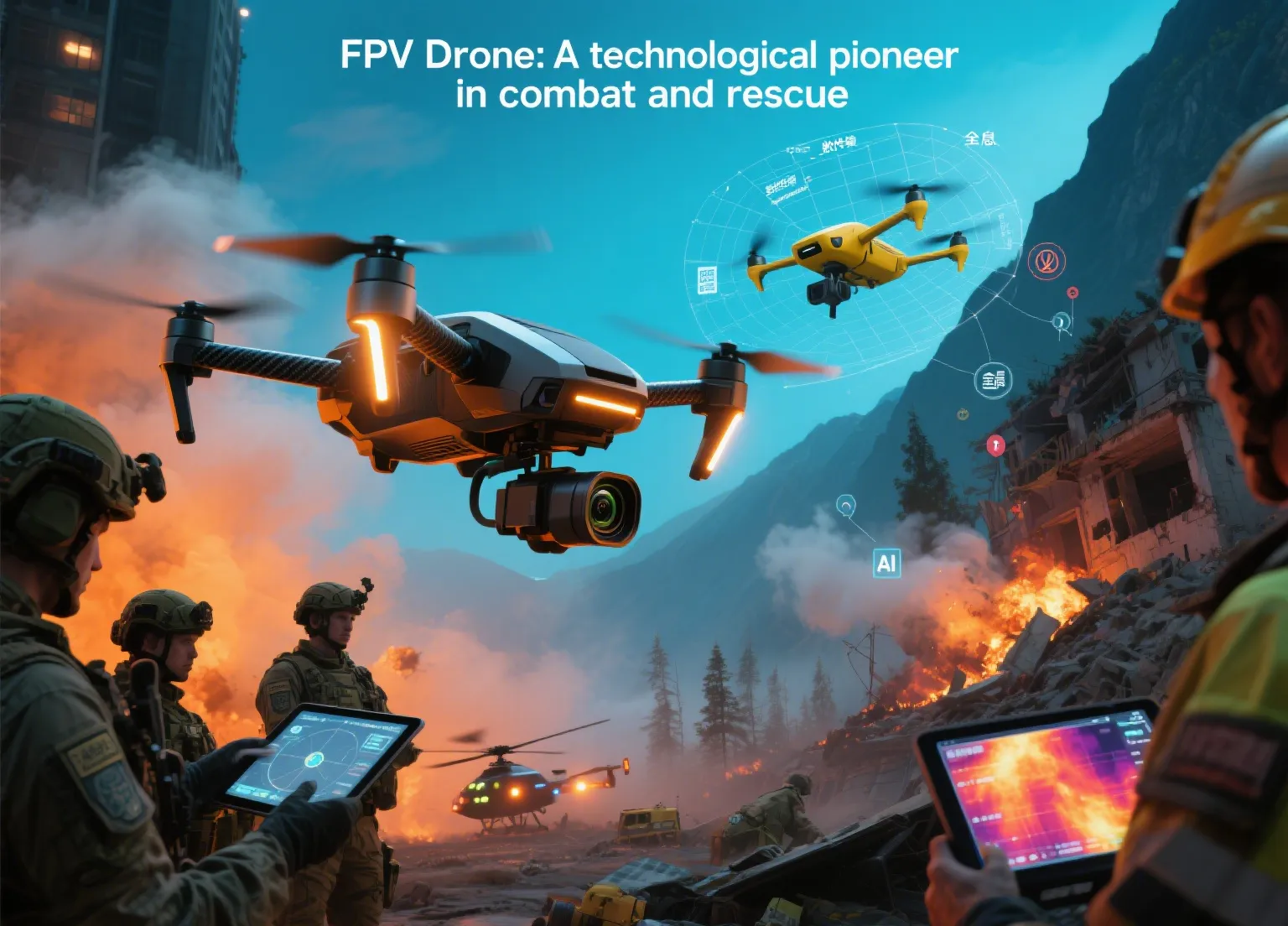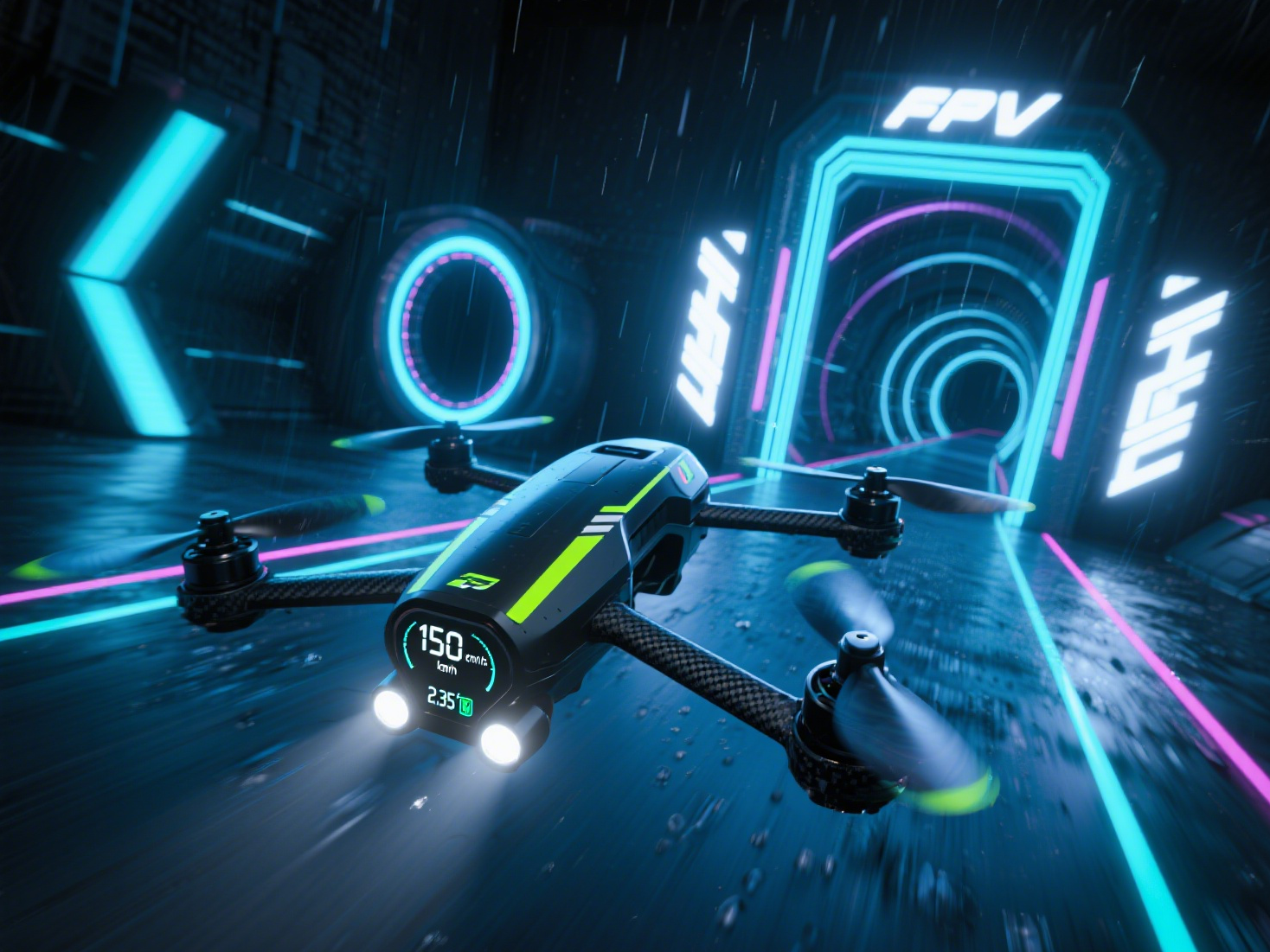How FPV Drone Technology is Revolutionizing Search & Rescue

FPV Technology Overview
FPV technology enhances operators’ real-time perception through camera and video transmission systems. Although latency issues exist, continuous technological innovations address this challenge. FPV technology plays a crucial role in drone operations, providing essential support for mission execution.
FPV drones convert visual scenes into video signals via cameras and transmit them wirelessly to ground control devices. Operators view footage in real-time using monitors or head-mounted displays. Low latency is critical – high delays make control difficult and dangerous.
New-generation systems like DJI’s O3 Air Unit reduce latency below 30ms through digital transmission. High-resolution lenses and high-refresh-rate displays improve image clarity and operational precision, enhancing reaction speed and decision-making.
Military Applications
FPV drones have broad military applications, improving reconnaissance, surveillance, and intelligence gathering efficiency. They play vital roles in border patrols, target positioning, and tactical support, delivering real-time intelligence to combat commanders.
These drones conduct low-altitude reconnaissance in enemy territory without exposing soldiers. Compared to traditional equipment, they’re more cost-effective and deploy faster. In border security, they continuously monitor large areas, detecting and reporting suspicious activities.
For tactical support, frontline soldiers use FPV drones to rapidly assess terrain, enemy positions, and safe routes. Since 2023, modified FPV drones have been used for precision strikes and intelligence collection, demonstrating significant tactical value.
Search and Rescue Applications
In search and rescue missions, FPV drones help quickly locate missing persons or disaster sites. Through real-time video transmission, they effectively facilitate disaster relief, forest fire monitoring, and rescue operations, significantly improving efficiency.
They rapidly survey hazardous areas like mountains, forests, or earthquake rubble. The real-time perspective allows immediate target identification. During forest fires, they penetrate high-temperature zones to map fire spread, aiding deployment decisions.
In earthquake rescue, compact FPV drones access confined spaces to locate trapped individuals. In 2022, Japanese rescue teams successfully used FPV drones to locate missing climbers in avalanches, greatly enhancing rescue efficiency.
Environmental Adaptability
Modern FPV drones operate in diverse harsh environments using high-performance motors and stable flight control systems. GPS-assisted navigation and visual positioning maintain stability in complex terrain during strong winds, rain, snow, or dust storms.
Manufacturers are developing lightweight batteries and cold-resistant circuits for high-altitude/extreme-cold operations. Certain models can operate at -20°C for over 20 minutes, making them suitable for mountain search missions.
Privacy and Security Considerations
FPV drone usage requires attention to data security and privacy. Real-time video transmission risks sensitive information leakage if intercepted, potentially compromising military operations.
Military FPV drones typically feature encrypted transmission modules and dedicated communication frequencies. Civilian rescue operations must comply with privacy regulations, avoiding recording unrelated individuals or private areas.
Developers are implementing AI protection mechanisms and multi-factor authentication to counter electronic interference and hacking attempts, enhancing operational security.
Future Development Trends
FPV drones are evolving toward greater intelligence. AI enables target, facial, and heat source recognition, improving search efficiency. Autonomous flight technology allows predefined path navigation without manual operation.
Multi-sensor integration (infrared, night vision, radar, GPS) enables operation in all lighting and weather conditions. Future FPV drones will become lighter, faster, and smarter – indispensable tools in military and rescue operations.

